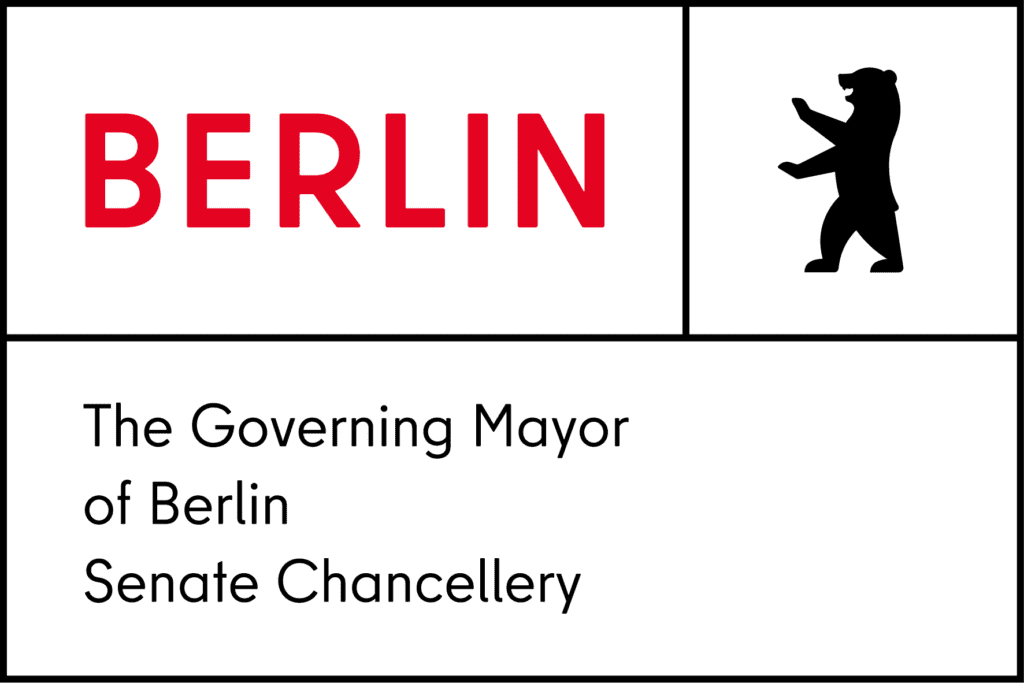If you click through the District profile of Tempelhof-Schöneberg , you’ll see that the share of green space in Tempelhof even exceeds the bar provided: residents here have over 184 percent more public green space available to them compared to other districts. The reason for this is Tempelhofer Feld – a former airport site which is now one of the most popular recreational areas in the whole of Berlin.
No wonder: the 300-hectare area at the heart of the city offers lots of space for outdoor leisure activities. From sports and dance groups to urban gardening and mini golf: lots of associations and initiatives offer opportunities for participation, entertainment, and dialog on the subject of urban nature. We wanted to pool this commitment and expertise, so we gathered it all together at our Kiezlabor for ten days from August 17 to 27. For this purpose, we took up residence at Tempelhofer Damm next to the Luftschloss and hosted a diverse program on the topic of “Climate in the city”. Here we share highlights and insights from this summer event.
Here’s to urban nature
We dedicated the first day of ourKiezlaboron Tempelhofer Feld to what gives Berlin its good reputation – namely its green infrastructure! After all, trees and green oases contribute to creating a healthy climate in the city – and ensure things will stay that way in the future, too. For this reason, we organized an entire theme day on urban greenery and urban trees, at which we engaged in dialog with experts from the administration and from civil society. We also tested a sensor that helps determine the water needs of urban greenery, got busy with watering cans, and shared insights into Berlin’s most committed watering community, namely Gieß den Kiez.
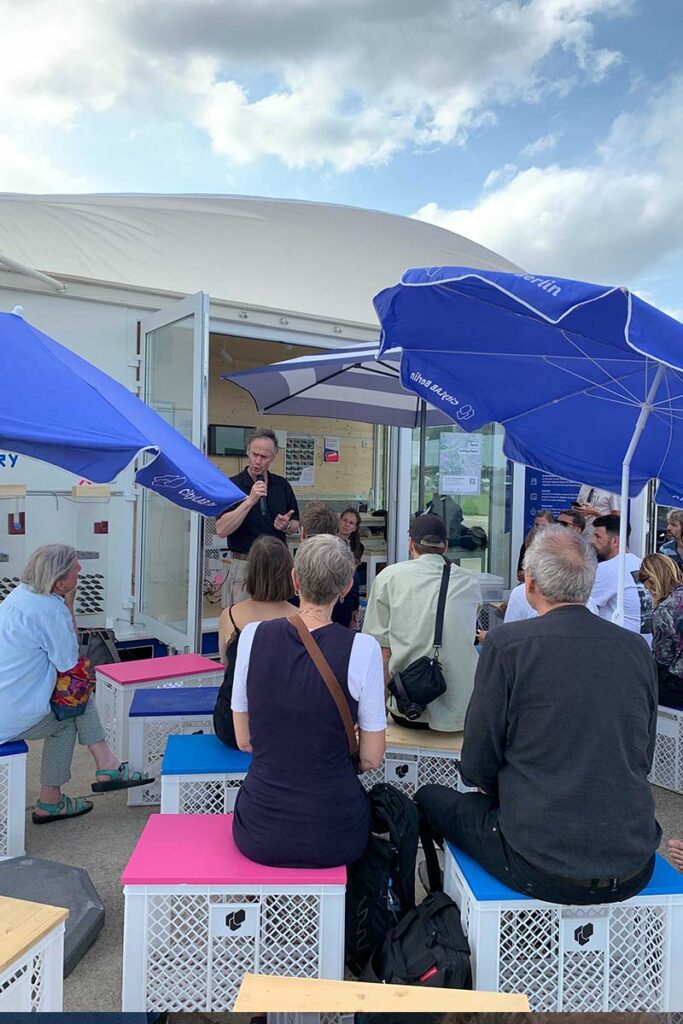

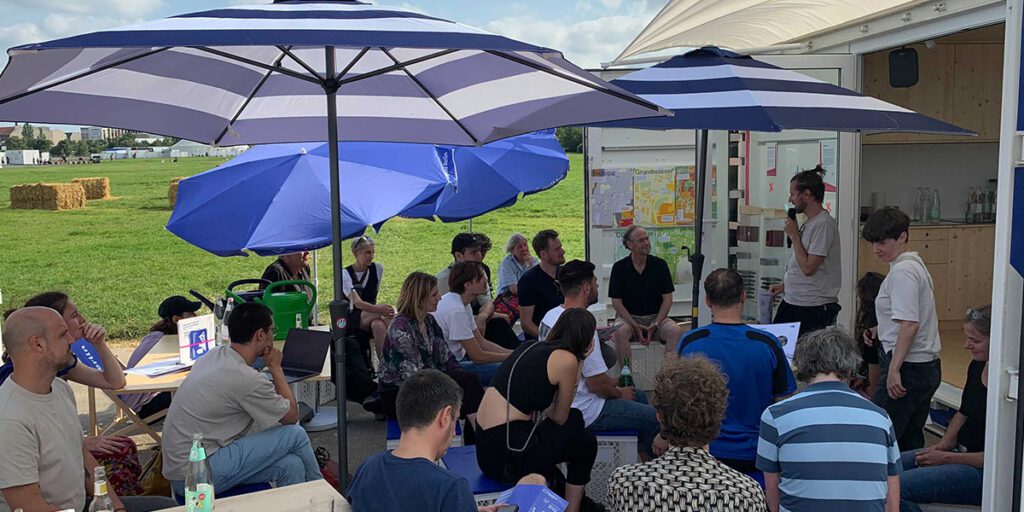
The Kiezlabor at the Bürger:innenfest
On August 19, Tempelhofer Feld was transformed into an open-air festival with lots of activities to join in and explore – and the Kiezlaborwas right at the heart of the action! In addition to insights from Tempelhof beekeepers and the garden initiative Feld Food Forest , we dedicated a field research workshop to visions for the future of Tempelhofer Feld. What could make Tempelhofer Feld an even better place for you? In order to reflect on this question, we took different perspectives – for example that of children, pensioners, bees, sheep, plants, microorganisms and lots more – to find out what changes are needed to maintain and further develop the area as a life-friendly and climate-resilient space. We brought our ideas and visions of the future to life in the form of analog mapping using modeling clay, at the same time collecting them on a digital map.
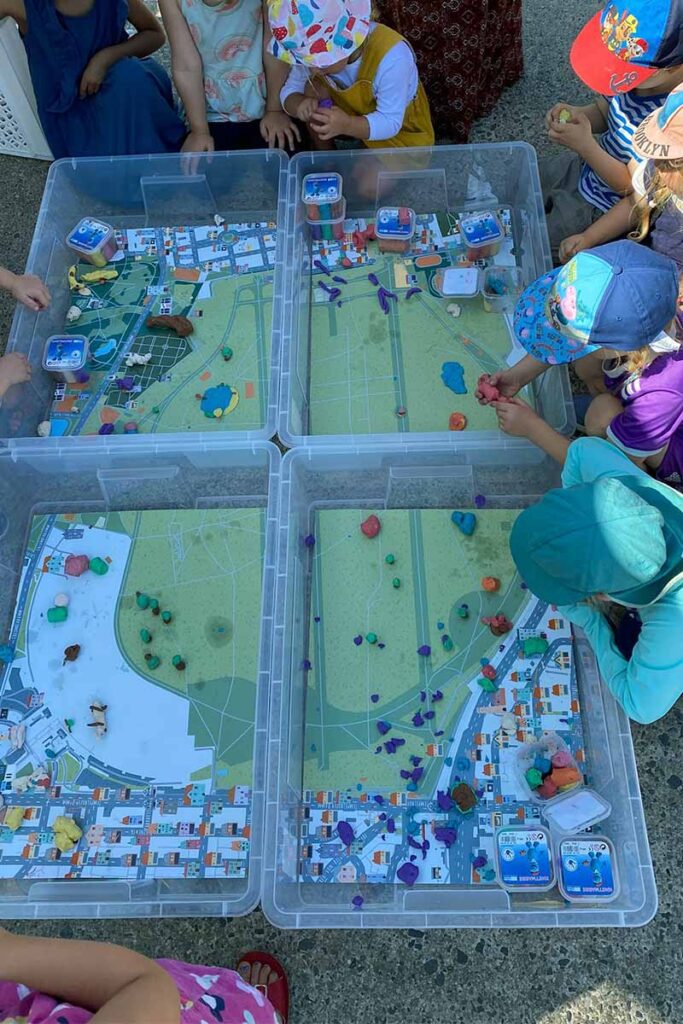
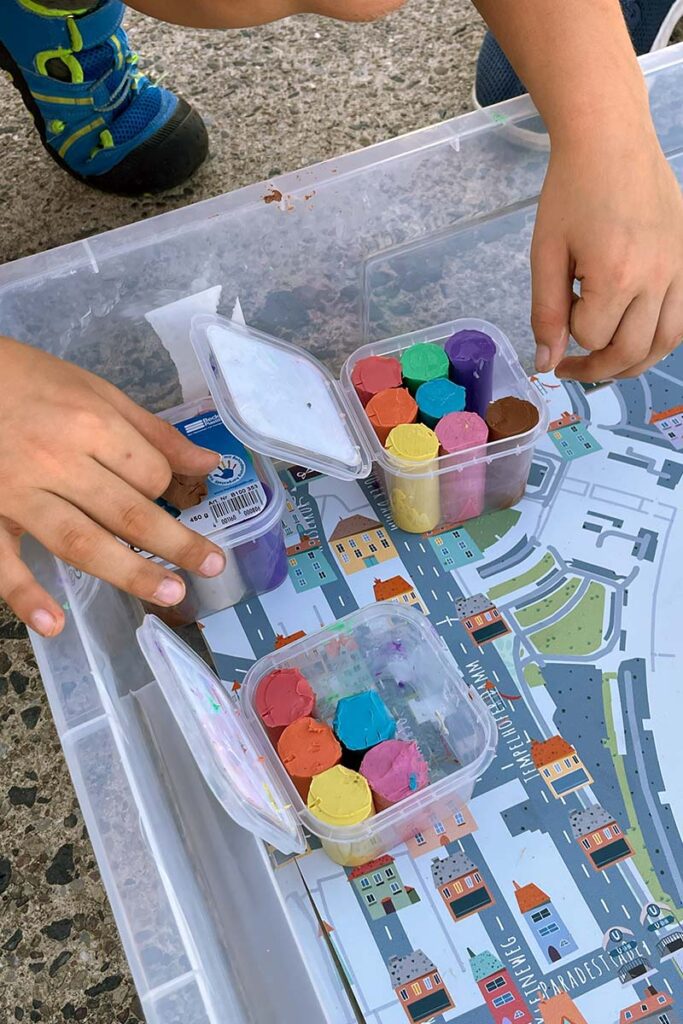
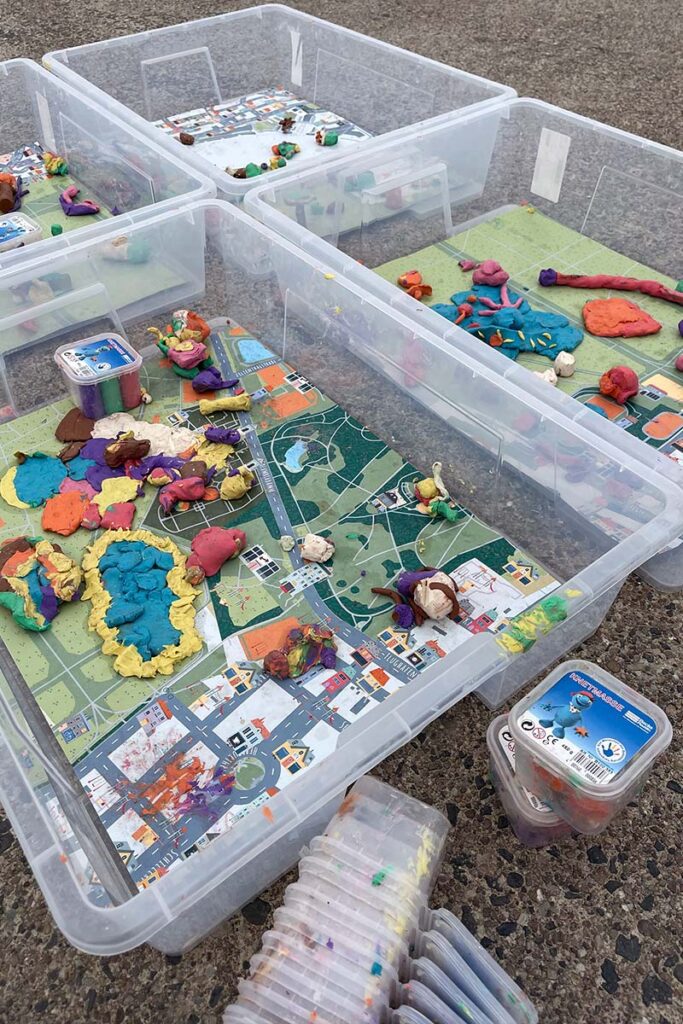
Coffee, cake and Kiezlabor – with activities for senior citizens
Our Kiezlabor can be many things: a place to experiment, to find out information, or simply to share ideas and drink coffee – and all these things happened at the meeting with the senior citizens’ network Seniorennetz and the care competence center Pflege 4.0! In cozy group sessions we tried out tablets suitable for senior citizens and browsed through the online platform Seniorennetz. Björn Trenker of the care competence center Pflege 4.0 really liked the format: “It was an unusual venue for us – we enjoyed presenting our project and the virtual reality application at the Kiezlabor and exchanging ideas with senior citizens. It would be nice to be able to offer this at future venues too – and not just because of the delicious cake!”

Wishes come true – with the citizen center training department in the Kiezlabor!
The idea of offering an outdoor citizen center went down well at our test location before re:publica, so we were particularly pleased to be able to host a visit by the Tempelhof-Schöneberg citizen center training department on Tempelhofer Feld. Here, too, local residents were delighted to be able to take care of their administrative affairs spontaneously and without having to wait for long: “You saved my vacation! I’m so glad I was able to extend my passport before going on holiday,” one participant told us. In addition to the spontaneous joy this caused, there was also the opportunity to talk to employees at the citizen center training department about their work and everyday life in administration. The format provided a welcome change for the employees, too: “It’s nice to work in such an unusual place for a change, and people respond very positively to being able to make use of our services without having to make an appointment,” said one employee, pleased with the surprised and positive feedback.
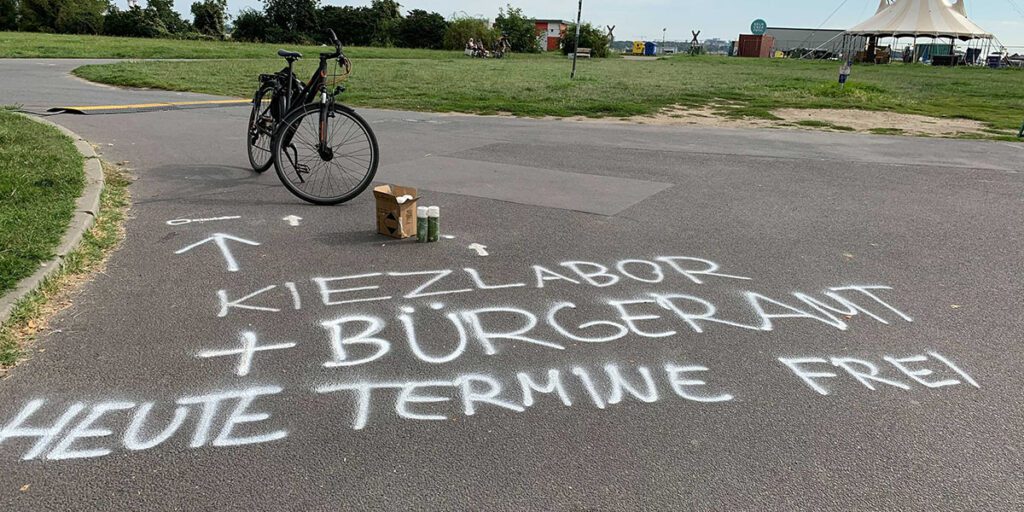
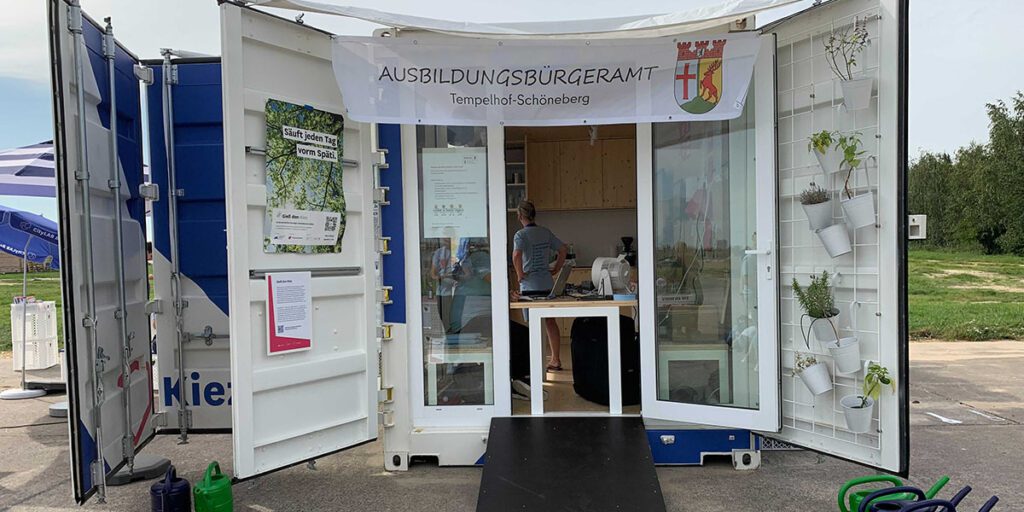
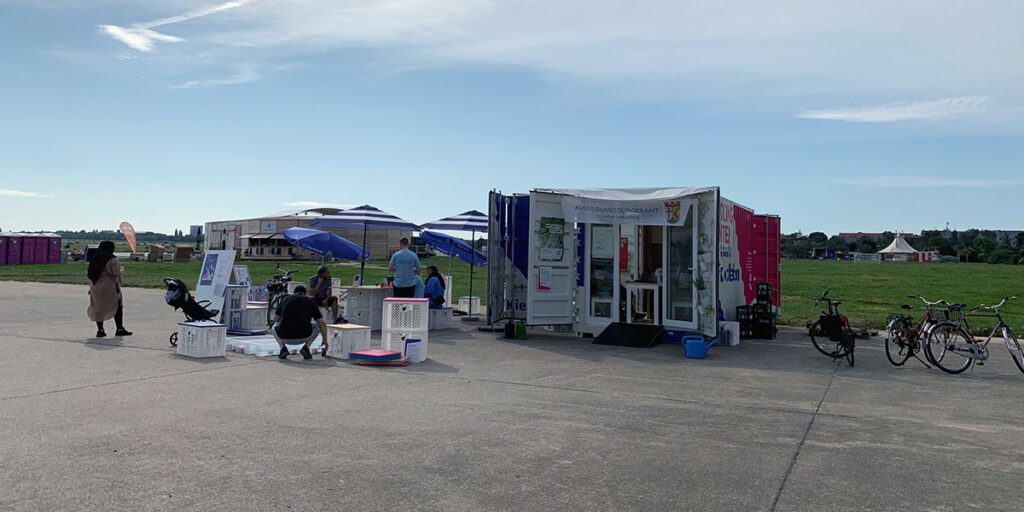
Simulation game for cycle lanes
For anyone discussing “climate in the city”, it’s impossible to ignore the issue of mobility[MI1] and the expansion of cycle lanes. In order to conduct this debate as neutrally as possible, the Berlin Public Library Association devised a simulation game: in the fictitious Berlin district of Biberfelde, a road that is frequently the scene of accidents is to be converted into a safe cycle lane. A district council meeting is held is to help to bring together the various stakeholders in the neighborhood and make a decision that will contribute to the transformation of the district in the interests of the majority. In this simulation game organized by Tempelhof-Schöneberg District Central Library, participants were able to take on different roles to get actively involved in the decision-making process. “It’s really fascinating to put your own opinions and ideas on cycling to one side and actively put yourself in other people’s shoes. You could feel at the table how much this stimulates real dialog – even beyond the simulation game,” as one participant told us.
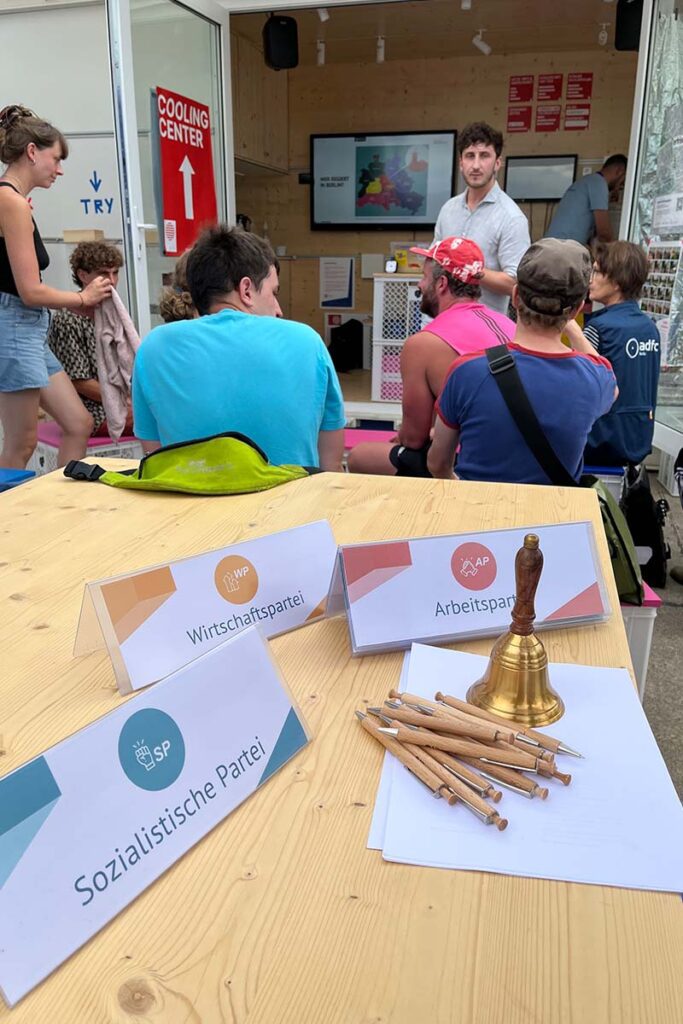
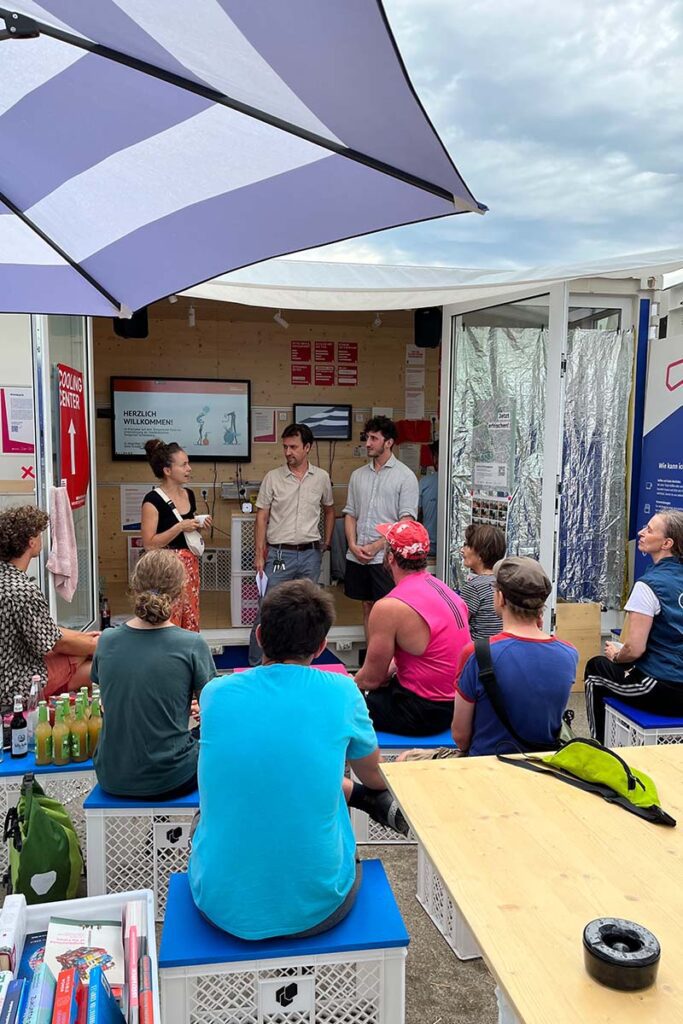

Green, greener, urban gardening
If there’s one thing Tempelhofer Feld simply has to have, it’s a theme day on urban gardening! In particular, our guests were able to get active themselves: at a workshop on the subject of watering systems we had three different stations for building irrigation systems that people can use on their own balcony or in their own garden, including a crash course in programming! In the second part of the program, we stuck our noses deep in the ground and made our own topsoil and compost from organic waste. Here, artist and soil practitioner Ayumi introduced people to the Terra Preta method , which involved chopping up kitchen waste with a spade, mixing it with soil and adding hard-working helpers such as worms and microorganisms – and in no time at all we had prepared the fertile compost for Feld Food Forest’s new community garden, ready for the next gardening project!
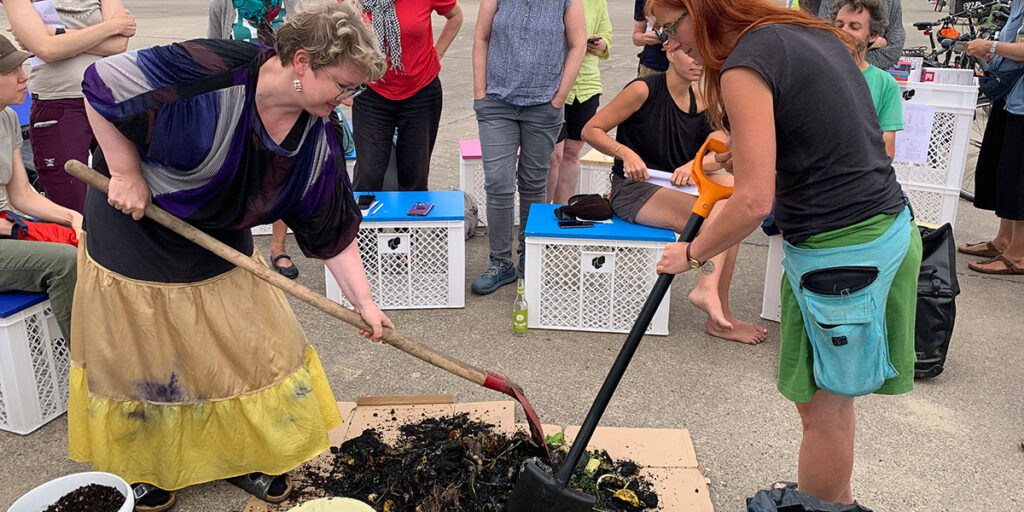
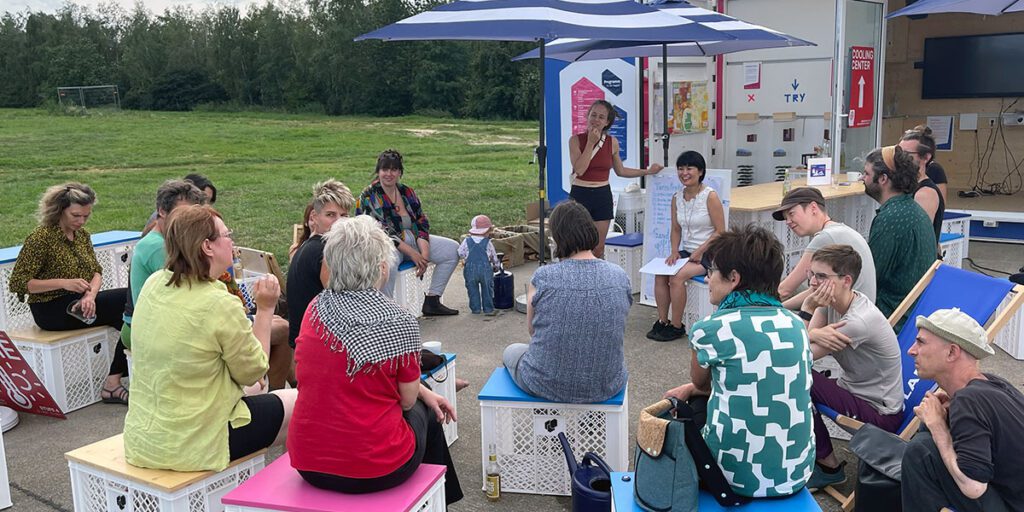
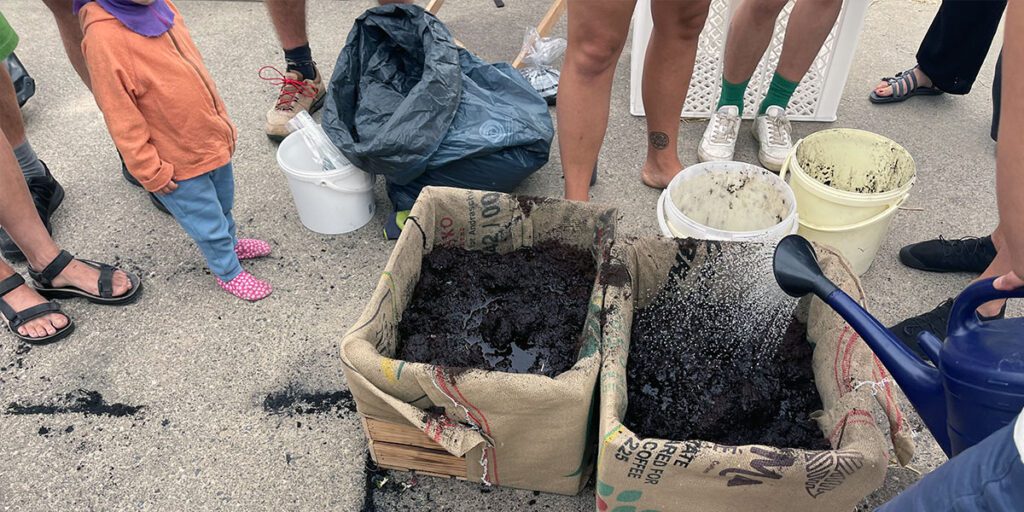
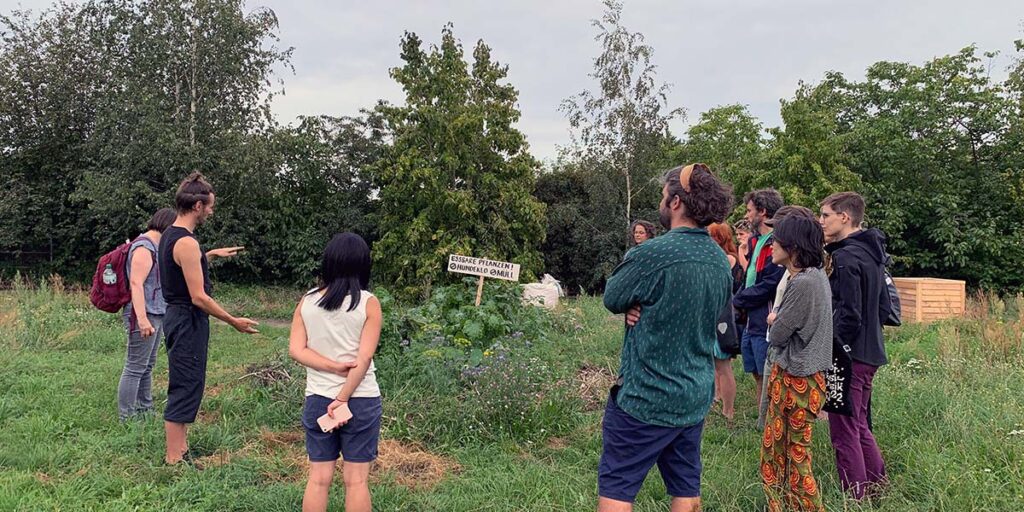
Conclusion and next venue
It wasn’t easy for our Tiny House to attract attention on the huge area of Tempelhofer Feld – and the temperatures were sometimes very high, so going to a swimming pool was probably a much more attractive option. But despite the heatwave and the endless expanse of the field, we managed to reach visitors who specifically dropped by to attend our numerousKiezlabor events.
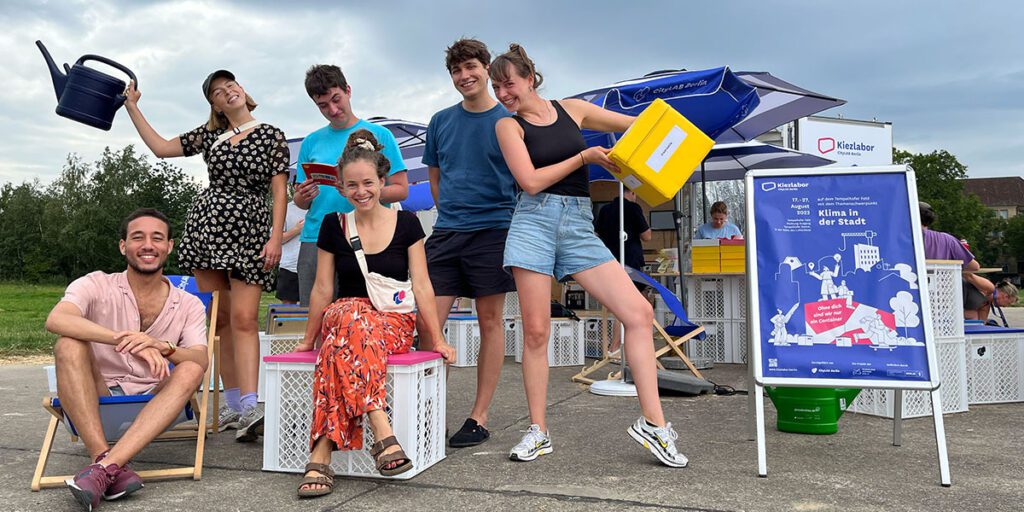
Given the amount of sunshine were able to soak up on Tempelhofer Feld, our solar cells are now definitely fully charged and the Kiezlabor is ready to set off for its next location in the Graefekiez district! You will find our Tiny House dedicated to the digital transformation fromSeptember 6 to 17 on the corner of Dieffenbachstrasse and Grimmstrase, this time looking into the theme of “space in the city”. We look forward to seeing you there!
The Kiezlabor is a project implemented by CityLAB as part of the Gemeinsam Digital: Berlin strategy.
